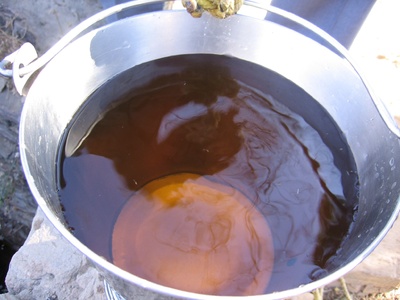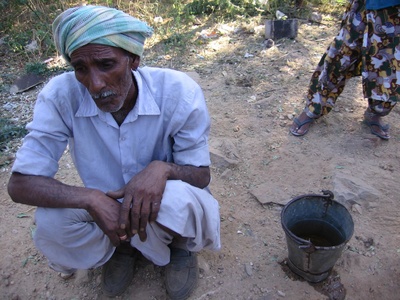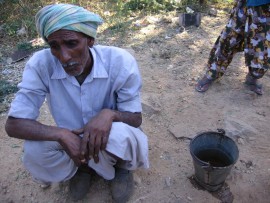Groundwater Contamination
Description
Groundwater is water located beneath the surface in soil pore spaces and in permeable geological formations. Sources of groundwater include seepage from the land surface, such as rainwater, snowmelt and water also that permeates down from the bottom of some lakes and rivers.1 Fossil groundwater is water that has been trapped in rock formations over geological time scales. Groundwater is a very important source of freshwater, making up 97 percent of the world’s accessible freshwater reserves.2 In addition, about two billion urban and rural people depend on groundwater for everyday needs.3
Context
Fresh drinking water makes up only 6% of the total water on Earth and 100% of the world’s population relies on it. This includes the icecaps and glaciers and if these sources are subtracted from the total, only 0.3% of the water on Earth is useable for drinking, and the majority of that is groundwater. Millions of people in the developing world rely heavily on groundwater, mostly through shallow dug wells. These can easily become polluted, primarily because of human activities. Such activities can be broadly categorized into four groups: municipal, industrial, agricultural, and individual sources.4
Municipal sources of groundwater contamination include open dumpsites, poorly constructed or maintained landfills, latrines and other waste sites. Each of these can contain a range of pathogens and toxins, including heavy metals that can migrate downward and contaminate aquifers. Industrial pollution of groundwater can come from dumping of wastewater or waste, from mining activities and from leakage or spillage from other industrial processes. Mining primarily affects groundwater through leaching of mine tailing piles.5 Chemical manufacture and storage similarly present a threat through leakage. Agricultural contamination comes primarily from overuse of pesticides and fertilizers that can later seep into groundwater sources.6
Lastly, individuals can also cause groundwater contamination by improperly disposing of waste. Motor oil, detergents and cleaners can leak into water sources. Importantly, groundwater can also be contaminated by naturally occurring sources. Soil and geologic formations containing high levels of heavy metals can leach those metals into groundwater. This can be aggravated by over-pumping wells, particularly for agriculture. This is the case in much of Bangladesh, where groundwater contains high levels of naturally occurring arsenic. One study indicated that a full one fifth of the population drinks water containing 5 times the arsenic level recommended by the WHO7.
Groundwater pollution differs from surface water contamination in several important respects. Among them, it does not typically flow to a single outlet. It can affect people through wells dug in a contaminated aquifer, as it can flow into streams or lakes. Groundwater pollution also occurs on a different timescale than surface water contamination. Flow rates vary widely and can be as slow as 2 miles a year. Because of this, nonpoint source pollution can take years or even decades to appear in wells and just as long or even longer to dissipate or be converted.
These distinctions depend on topography, hydrology and the sources of groundwater recharge and have implications for limiting as well as remediating contamination.8
Exposure Pathways
Groundwater pollutants can enter the body directly through water supplies or by eating foods prepared with contaminated groundwater or grown in fields using contaminated sources. It may also affect humans when they are in direct contact with polluted waters.
Health Effects
Health effects from groundwater pollution depend on the specific pollutants in the water. Pollution from groundwater often causes diarrhea and stomach irritation, which can lead to more severe health effects. Accumulation of heavy metals and some organic pollutants can lead to cancer, reproductive abnormalities and other more severe health effects.
What is Being Done
Groundwater is very difficult to remediate, except in small defined areas and therefore the emphasis has to be on prevention. This is based on protection of sensitive aquifers, control of discharges and releases and provision of drainage and sanitation systems to avert pollution discharges. For small areas of highly polluted groundwater, it may be possible to pump out, treat, and recharge (which is expensive); to treat in-situ – for some contaminants; or to try to contain the pollution “plume”, physically or chemically. However, there is continuing degradation of important groundwater aquifers in many countries, the serious impacts of which are only slowly being appreciated.
Footnotes
1 “What is Groundwater?” U.S. Geological Survey. U.S. Department of the Interior. Last Updated September 1, 2005. Available at http://pubs.usgs.gov/of/1993/ofr93-643/
2 The World Bank. “Water Resources Management: Groundwater” Accessed on September 15, 2008. Available at http://go.worldbank.org/6YTISD5KR0
3 ibid
4 “Sources of Groundwater pollution.” Lenntech: water treatment and air purification. Available at http://www.lenntech.com/groundwater/pollution-sources.htm
5 “Sources of Groundwater pollution.” Lenntech: water treatment and air purification. Available at http://www.lenntech.com/groundwater/pollution-sources.htm
6 “Groundwater pollution.” Marquette County Community Information System. Available at http://www.mqtinfo.org/planningeduc0020.asp
7 Pearce, Fred. “Arsenic in the Water.” The Guardian. February 19, 1998. Available at: http://www.lifewater.ca/887805655-arsenic.htm
8 Harter, Thomas. “Groundwater Quality and Groundwater Pollution” ANR Publication 8084, Division of Agriculture and Natural Resources, University of California at Davis 2003. Available at http://groundwater.ucdavis.edu/Publications/Harter_FWQFS_8084.pdf
Additional Resources
Groundwater Contamination (word doc)
Additional Photos
 |
A bucket of water drawn from a polluted well. India. Photo by Blacksmith Institute. |
|
Discolored polluted water. India. Photo by Blacksmith Institute. |
|
 |
Polluted ground water especially affects poor communities without the resources to use other sources. Bhiwadi, India. Photo by Blacksmith Institute. |




